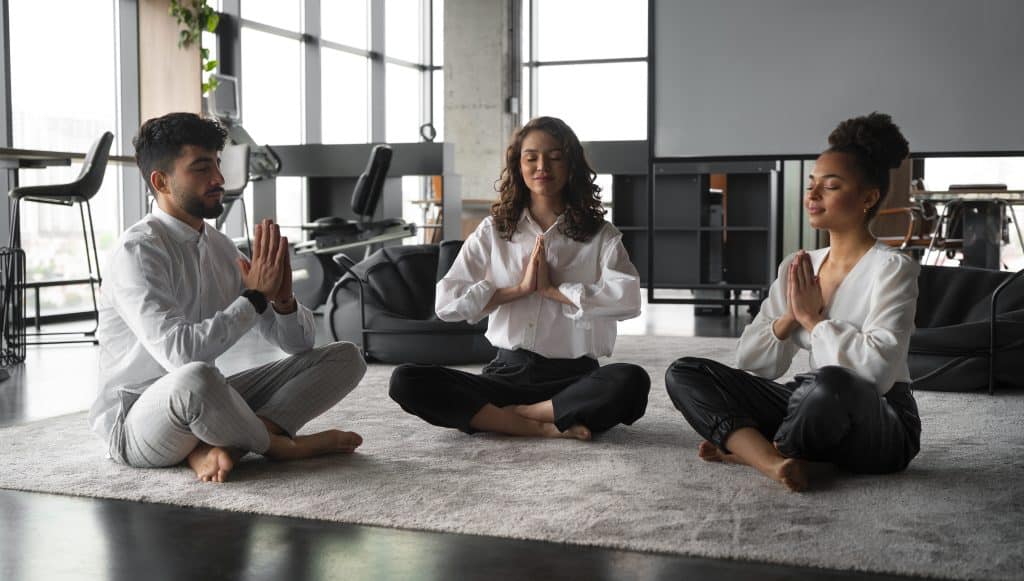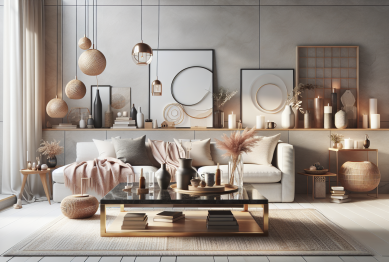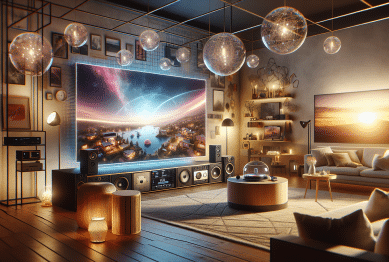In recent years, the connection between physical environment and mental agility has moved from theory to mainstream conversation. As workspaces evolve, homes adopt more open layouts, and digital creators embrace minimal backdrops, one idea continues to gain ground: open spaces boost mental flexibility. The design of your surroundings may directly influence how adaptable, innovative, and responsive your thinking becomes.
Whether you’re navigating remote work, collaborative projects, or creative problem-solving, your spatial context shapes your cognitive behavior. And open environments—physical and psychological—are quickly becoming a tool for clearer, more flexible thinking.

The Psychology of Space and Flexibility
Open spaces, by definition, reduce boundaries. That reduction doesn’t just improve visibility—it eases the mental load. When your environment is expansive and minimally obstructed, your brain shifts into a mode that’s less defensive and more exploratory.
A study from the University of Michigan showed that natural and open environments support a concept called “directed attention restoration”—a process where mental fatigue is reduced, and higher-order cognitive functions (like flexibility, empathy, and creativity) are improved.
What Is Mental Flexibility, and Why Does It Matter?
Mental flexibility refers to your brain’s ability to adapt to new information, switch perspectives, and problem-solve under changing conditions. It’s not just a personality trait—it’s a cognitive function that can be nurtured or stifled based on environmental factors.
When mental flexibility is high, people are more capable of:
-
Solving problems creatively
-
Shifting gears without frustration
-
Understanding diverse points of view
-
Learning from experience
Given today’s fast-moving lifestyle, mental flexibility is a competitive advantage. And your environment—especially open space—plays a big role in shaping it.
Why Open Spaces Boost Mental Flexibility
The idea that open spaces influence how we think isn’t new, but it’s more relevant than ever. Here’s how open spaces act as cognitive enhancers:
1. They Reduce Cognitive Load
Cluttered or cramped environments force the brain to process more data, often unconsciously. Every object, wall, or partition competes for attention. In contrast, open layouts allow for clearer sightlines and less processing overhead. This frees up mental energy for abstract thinking and creative problem-solving.
2. They Encourage Movement and Flow
Physical movement encourages mental agility. Open layouts make it easier to move around, stand, stretch, or change working positions. According to Frontiers in Psychology, movement is directly linked to divergent thinking—a key component of flexibility.
3. They Foster Unstructured Thinking
Walls and boundaries tend to reinforce structure and rules. Open spaces, on the other hand, promote exploration and idea generation. This is particularly valuable in brainstorming sessions, collaborative planning, or personal reflection.
4. They Improve Mood and Reduce Stress
Mental flexibility suffers under pressure. Open environments reduce feelings of confinement, which can ease anxiety and irritability. A calm emotional state creates space for perspective-shifting and adaptation.
The Rise of Open Space Design in Lifestyle Trends
Open concept living has been a hallmark of modern architecture for decades, but it’s recently taken on a new function: cognitive support. During the pandemic lockdowns, many people rearranged their homes to feel less enclosed. Workspace design shifted similarly.
Current trends reflecting this shift include:
-
Remote workers choosing open co-working cafés over cubicles
-
Minimalist interior styles gaining traction in urban apartments
-
Creative studios using open, collaborative floor plans instead of private rooms
-
Mental health apps promoting visual simplicity and neutral palettes
It’s not just about aesthetics—it’s about creating the conditions for clearer thought.
How to Leverage Open Space for Mental Flexibility
Whether you work in a high-rise office, a one-bedroom apartment, or a corner desk at home, you can create the feeling of open space. Here’s how:
1. Declutter Regularly
The simplest way to create openness is to remove what doesn’t serve. Visual clutter clogs cognitive flow. Limit the number of items on your desk, walls, and shelves. Keep only what contributes to focus, function, or calm.
2. Use Light and Color Strategically
Natural light expands visual perception and reduces mental fatigue. Position your workspace near a window if possible. Use light, neutral colors on walls or furniture to reflect brightness and simulate space.
3. Incorporate Vertical Space
Use vertical storage or hanging solutions to free up floor and desk space. The more open your physical movement feels, the more likely your thoughts will follow.
4. Add Breathing Room to Your Schedule
Openness isn’t just about physical design—it’s also about time. Building mental flexibility requires unstructured thinking time. Allow space between meetings, tasks, or responsibilities to process and reframe ideas.
5. Create Zones for Movement
Even in small environments, designate a spot where you can stand, pace, or change position during work. Physical movement supports cognitive shifts and breaks mental rigidity.
The Open Space Debate: Are There Downsides?
Some critics of open space design cite noise, lack of privacy, and overstimulation. While this can be true in poorly executed open offices, thoughtful design can mitigate these issues.
Key solutions include:
-
Acoustic panels or white noise to reduce auditory distractions
-
Moveable dividers for optional privacy
-
Layered lighting to support different energy levels
-
Visual boundaries to anchor tasks while keeping sightlines open
Ultimately, the goal is balance—structure without confinement, clarity without sterility.
What the Research Says
Scientific findings increasingly support the link between spatial openness and mental adaptability. In addition to earlier studies, a 2020 paper in Cognitive Research: Principles and Implications found that individuals exposed to open virtual environments demonstrated increased creativity and flexibility on cognitive tasks compared to those in confined spaces.
Another study published in Journal of Environmental Psychology noted that perceived spaciousness in indoor environments positively influenced problem-solving performance and emotional regulation.
Conclusion
Mental flexibility isn’t only about personality or practice—it’s also about place. The environments we choose and create feed our ability to think clearly, shift perspective, and respond to change. Open spaces—whether physical, digital, or temporal—can quietly shape the way our minds operate.
Understanding why open spaces boost mental flexibility helps us design homes, workspaces, and routines that serve us better. As the world gets noisier, the space to think freely may become one of our most valuable resources.
Reference
- Kaplan, S. (2001). Meditation, Restoration, and the Management of Mental Fatigue. University of Michigan.
https://pubmed.ncbi.nlm.nih.gov - Oppezzo, M., & Schwartz, D. L. (2014). Give Your Ideas Some Legs: The Positive Effect of Walking on Creative Thinking. Frontiers in Psychology. https://www.frontiersin.org
- Neurotectura – How Ceiling Height Influences Creativity and Focus (2024):
https://neurotectura.com









